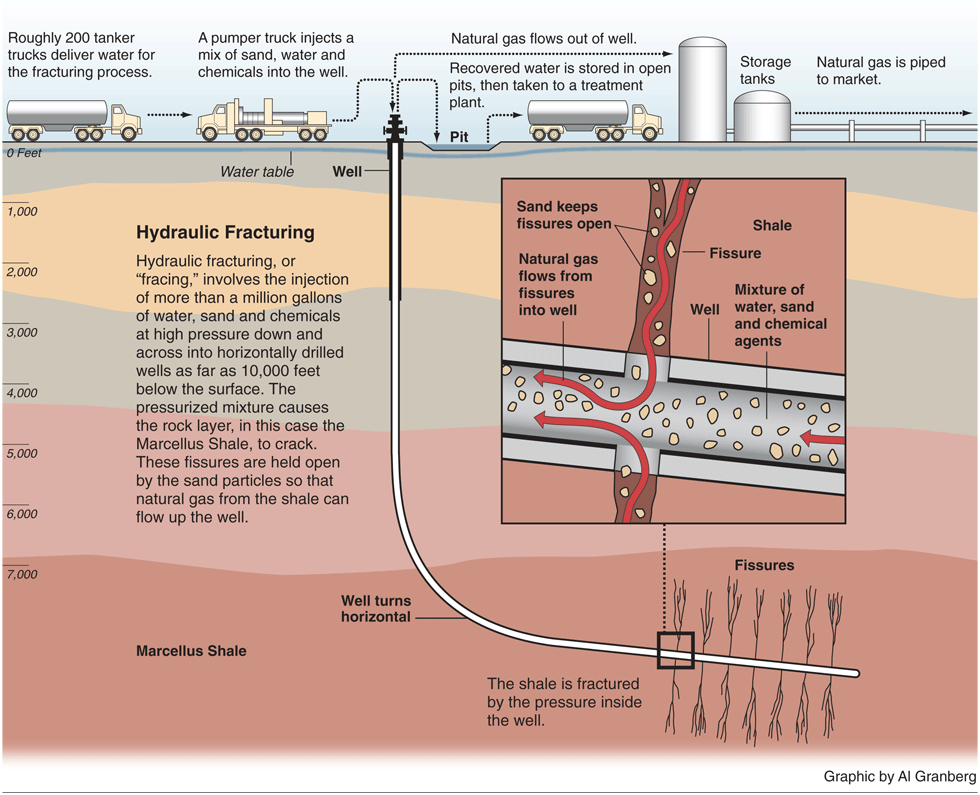Natural Gas Hydraulic Fracturing (hydrofracking)
Lately, the governments of all the countries started to realize that the problem of the pollution is needed to be faced and the alternative options are needed to be seeked in order to avoid the reduction of the oxygen level in the athmosphere and illuminate any health problems among people. Therefore new technologies along with population concerns started to work on the substitutes of the oil and coal. Here are some options that can be met in today’s world: wind and solar power, natural gas and hydraulic fracturing.
Hydraulic fracturing is the propagation of fractures in a rock layer by a pressurized fluid.

It uses millions of gallons of water, laced with a cocktail of chemicals, to fracture shale and release gas.
“It is imperative that any drilling in the Marcellus Shale be environmentally sensitive and safe.
These reviews must demonstrate that health and environmental risks are adequately addressed and protected.”
-Governor Andrew Cuomo
Although hydraulic fracturing as an optional choice of green-oriented energy(gas) supply have it’s positive consequenses, such as new employment, domestic supply, which doesn’t require foreign dependancy anymore, that introduces economic side of the innovation; also presents as a eco-efficient choice then the oil and coal, which puts it’s accent on the enviromental prospective, however the chemical contamination of the water from the drilling and the releases greenhouse gases are some of the concerns that hydraulic fracturing is followed by. While the main industrial use of hydraulic fracturing is in arousing production from oil and gas wells hydraulic fracturing is also applied:
- To stimulate groundwater wells
- To precondition or induce rock to cave in mining
- As a means of enhancing waste remediation processes, usually hydrocarbon waste or spills
- To dispose of waste by injection into deep rock formations
- As a method to measure the stress in the earth
- For heat extraction to produce electricity in an enhanced geothermal systems
Overall Hydraulic Fracturing is an alternative that can be view through and used as an option of the natural gas supply due to it’s less harm-capability, that is been researched by the scientists.

Resourses:
About Hydrofracking
http://greenliving.about.com/od/scienceandtechnology/a/Hydraulic-Fracturing-Fracking.htm

